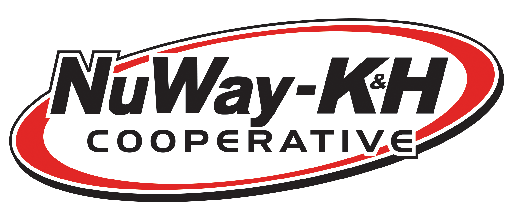Jeff Crissinger, VP of Agronomy Sales / Marketing
Jeff.Crissinger@NuWay-KandH.com
You have probably heard one or more of the terms “45Z”, “Sustainable Aviation Fuel (SAF)” or “Climate Smart Ag” recently. While these topics are all interconnected in the Carbon Intensity (CI) conversation, they each play a different role. In this newsletter, we will focus on the current Climate Smart Ag practices that were proposed by the USDA on January 15, 2025, as well as other potential practices that could be introduced prior to the finalization of the 45Z tax code later this year.
“By using Climate Smart Ag practices, growers can reduce their feedstock CI score. “
For review, the 45Z tax code (Clean Fuel Production Credit), which is currently in development, provides a tax credit to biofuel producers for the production of transportation fuels with lifecycle greenhouse gas emissions below a certain level. As part of this, feedstocks like corn and soybeans used to create biofuels are given a CI score. By using Climate Smart
Ag practices, growers can reduce their feedstock CI score and potentially receive a grain premium from the biofuel producer to do so.
As part of the 45Z tax code, it is the USDA’s responsibility to identify which Climate Smart Ag practices are eligible for Carbon Intensity reduction. Their first recommendations, released on January 15, 2025, identified the following eligible practices which can be used in combination:
No-Till
Full-width soil disturbance may not be performed regardless of the depth of tillage. Strip-till and fertilizer injection are allowed as long as the total Soil Tillage Intensity Rating (STIR) for all practices remains at 20 or below. NuWay-K&H’s strip-till machine currently has two configurations, shank and coulter application. Each should allow our customers to stay below a STIR value of 20 or less. Coulter applications would supply the lowest STIR value for strip-till. Under current USDA guidelines, this practice would likely provide the largest CI reduction of all listed.
Reduced-Till
Tillage methods where the entire soil surface is disturbed such as chisel plowing, field cultivating, vertical tillage, or ridge-till are allowed as long as the total of all practices combined stay at a STIR value of 80 or less.
Cover Crops
For this rule, cover crops must be seeded in the fall or inter-seeded into the previous commodity crop as early as possible and terminated as late as practical to avoid risk of yield loss due to competition. Cover crops must get established and then be terminated by winterkill, herbicide application, or non-soil-disturbing mechanical methods. Cover crops may not be harvested or grazed. Under current USDA guidelines, this practice would likely provide the second-largest CI reduction of all listed.
Use of Nitrification Inhibitors
Specified nitrification inhibitors qualify for a reduction in CI score by reducing nitrous oxide emissions into the atmosphere. To qualify, a producer must apply a nitrification inhibitor with all synthetic nitrogen (N) applications.
No Fall-Applied N
To qualify for the CI reducing standard, the first N application must occur within 30 days prior to or at the time of planting, and no fall N may be applied.
In-Season Split N Applications
This standard requires a minimum of two N applications, with the initial application at the time of planting and the remainder applied in one or more applications during the growing season. At least 75% of the N applied must be after crop emergence. In our opinion, 75% is a very high number; however, all of these standards are open for public comment, and we hope that this will get addressed to a more reasonable standard in the final version.
As mentioned above, all of the listed standards are subject to a 60-day public comment period, which ends on March 15, 2025. This allows suggestions and revisions to be made to the listed guidelines prior to the final rule being written. In addition, comments can also be made to suggest additional Climate Smart Ag practices that are not currently included. Examples of potential added practices are manure applications, green fertilizer applications, additional N and phosphorus stabilizer utilization, and reduced N where a nitrogen model such as Adapt-N could be used to help achieve lower N rates when the season allows.
Once the 60-day public comment period closes, the USDA will review all of the comments submitted and then propose its final Climate Smart Ag practice guidelines. Stay tuned for more information once those guidelines are released later this year.

